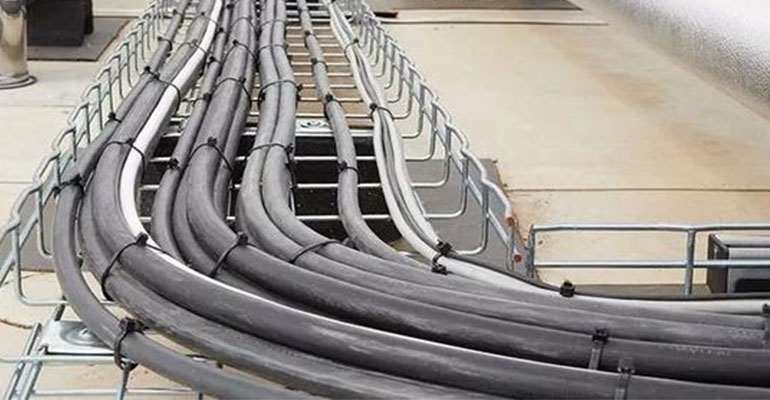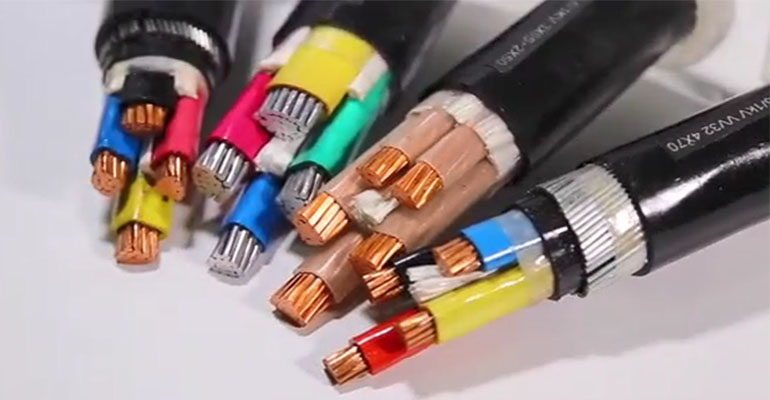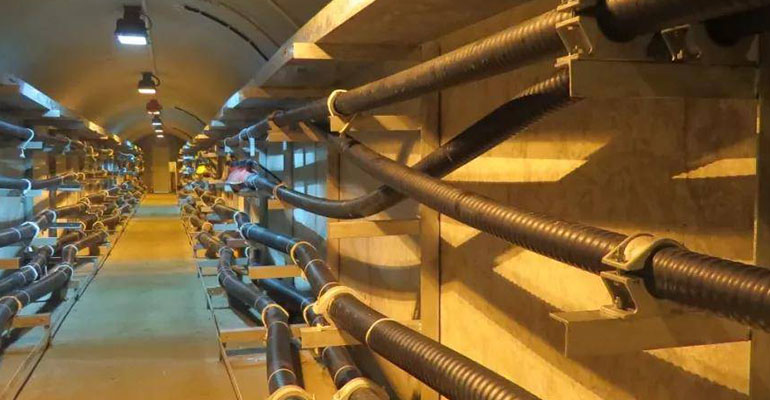- Offices Time:24 Hours Online
- Email:[email protected]
- WhatsApp:+8618339938759

Posted on December 20, 2022
Do you know the basic structure and working principle of power cables?
Power cables are mainly used to distribute and transmit electric energy. Compared with overhead lines, they are more expensive, but they have the advantages of less land occupation and less external influence. In power lines such as urban power supply, their proportion is gradually increasing.
The basic structure of the power cable:
The structure of the cable mainly includes three parts, namely the cable core, insulation layer and protective layer.
1.Cable core
The cable core is made of metal material with high electrical conductivity, currently copper or aluminum is mainly used. Copper is easy to weld, has better electrical conductivity and mechanical strength than aluminum: but aluminum is rich in resources, low in price, small in quality, and easy to process. It is used in oil-immersed power cables, and its catalytic effect on oil aging is relatively small.
In order to facilitate transportation and laying, the cable core is often twisted with multiple wires. In single-core cables or split-phase lead-clad cables, the conductive cores are often round cores; in multi-core cables, fan-shaped cores are sometimes made to reduce size and quality.

2.Insulation layer
The insulating layer is used to isolate the conductor, so that the wire and the wire, and the wire and the protective layer are isolated from each other. Therefore it must have high electrical strength and mechanical strength. In addition, it should have flexibility in a wide temperature range to prevent bending damage during cable construction.
3.Shielding layer
Power cables of 15kV and above generally have a conductor shielding layer and an insulating shielding layer.
4.Protective layer
The protective layer is used to protect the insulating layer, so that the cable is not damaged by external force during transportation, laying and operation, and prevents moisture and moisture from entering the insulating layer. The protective layer has a certain mechanical strength.
Plastic or rubber insulated cables are often covered with plastic or rubber sheaths; oil-impregnated paper insulated cables are often sheathed with lead or aluminum to prevent the insulating oil from flowing out. Power cables are often used as protective layers such as lead skin and steel armor.
How power cables work?
The working principle of the power cable is to transmit electric energy through a solid single wire or a stranded conductor with the function of conducting current, and the outer surface of the cable is covered with an insulating material with a withstand voltage to ensure the normal operation of the power cable.

Types of power cables:
There are many varieties of power cables, which can be divided into medium and low voltage cables and high voltage cables according to the voltage level.
1.Low-voltage cables: suitable for fixed laying on transmission and distribution lines with AC 50Hz, rated voltage 3kV and below for power transmission.
2.Medium and low voltage cables (generally refer to 35kV and below) include viscous impregnated paper insulated cables, non-drip cables, plastic insulated cables, rubber insulated cables, etc.
3.High-voltage cables (generally 110kV and above) include rubber-plastic insulated power cables, self-contained oil-filled cables, steel pipe oil-filled cables, etc.
4.Extra-high voltage cables: (275-800kV).
5.UHV cables: (1000kV and above).
How to choose a power cable?
When selecting cable specifications and determining the use specifications of cables, conditions such as heat generation, voltage loss, economic current density, and mechanical strength should be considered. According to experience, because of the large load current of low-voltage power lines, the cross-section is generally selected according to the heating conditions, and then its voltage loss and mechanical strength are checked; low-voltage lighting lines have high requirements for voltage levels, and the allowable voltage loss conditions can be used first. Select the section, and then check the heating conditions and mechanical strength; for high-voltage lines, first select the section according to the economic current density, and then check the heating conditions and allowable voltage loss; and check the mechanical strength of high-voltage overhead lines. If the user is inexperienced, he should seek advice from relevant professional units or persons.
Jinshui Wire&Cable Group is a professional wire and cable manufacturer with more than 20 years of manufacturing experience in wire and cable. Our provides customers with safe, effective and excellent power transmission and distribution wires and cables and value-added services with advanced equipment and technology. If you have any needs for wire and cable convenience, please contact us, and we will provide you with feasible product solutions.
Post categories
Most Popular Posts
-
The 136th Canton Fair welcomes you to participate!
October 12, 2024 -
High temperature cable introduction
July 26, 2024 -
Kenya Power and Energy Exhibition 2024
June 11, 2024 -
Introduction of rubber sheathed cable
June 5, 2024





